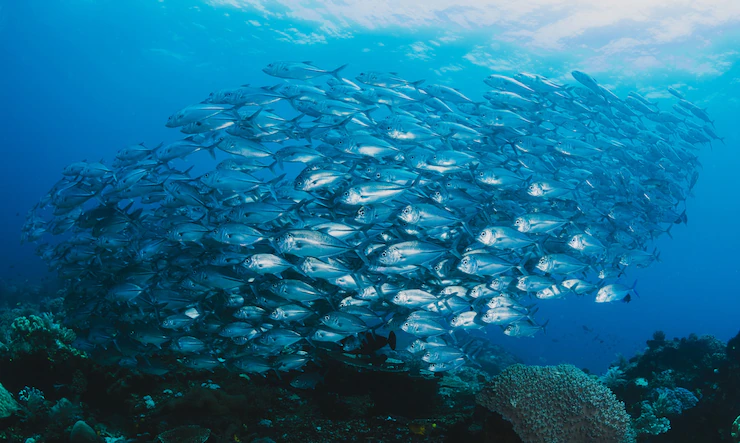
Agriculture technology has come a long way in the past few decades. Thanks to advances in technology, we can now produce more food than ever before. However, there is still room for improvement. To feed the world’s growing population, we need to continue exploring new and innovative farming ways.
Here are some examples of cutting-edge agricultural technology:
1. Precision Agriculture
Precision agriculture is a type of farming that uses GPS technology and sensors to track things like soil moisture levels, crop yields, and pest infestations.
This information is then used to decide when and how to plant, water, and fertilize crops. In other words, precision agriculture allows farmers to be much more efficient and effective in their work.
2. Gene Editing

With gene editing, scientists can make precise changes to the DNA of plants and animals. That allows them to create new varieties resistant to pests and diseases or with higher yields. Gene editing is still a relatively new technology, but it has the potential to greatly improve the way we grow food.
3. Drones
Drones are becoming increasingly popular in agriculture. There are now farming drones for sale that farmers can use to survey their crops, identify problems, and even apply pesticides and herbicides. In the future, farmers may even use drones to plant and harvest crops.
4. Vertical Farming
Vertical farming is a type of agriculture that uses vertically-oriented growing systems. Farmers can use these systems in places where land is scarce or in urban areas where space is limited. Vertical farms can also be more efficient than traditional farms because they make better use of resources like water and sunlight.
5. Robot Farm Workers
Robot farmworkers are already being used in some agricultural operations. They can perform tasks like picking fruits and vegetables or operating machinery. In the future, robots could play an even more significant role in agriculture, helping to increase yields and decrease costs.
6. Hydroponics
Hydroponics is a type of agriculture that doesn’t require soil. Instead, plants are grown in a solution of water and nutrients. Hydroponics can be used to grow crops in places where the soil is unsuitable or to produce higher yields in a smaller space.
7. Aquaculture

Aquaculture is the practice of raising fish, shellfish, and other aquatic animals for food. It is an essential source of seafood worldwide, and it is also becoming more popular as a source of protein for land-based animals like chickens and pigs.
8. Insect Farming
Insects are a nutritious and sustainable source of protein. In some parts of the world, they are already being consumed as food. However, insect farming is still in its early stages, and there is much room for growth.
9. Alternative Feed sources
With the world’s population expected to grow to 9.8 billion by 2050, we will need to find new and innovative ways to produce food. One way to do this is by developing alternative sources of feed for animals. That could include things like algae, insect meal, and even garbage.
10. Data-Driven Farming
Data-driven farming uses data collected from sensors, drones, and other devices to decide on planting, watering, and fertilizing crops. Farmers can use this information to create detailed field maps, optimize irrigation systems, and predict crop yields.
11. Greenhouse Agriculture
Greenhouse agriculture is a type of farming that uses greenhouses to control the environment in which crops are grown. That can include things like temperature, humidity, and light. Greenhouse agriculture allows farmers to grow crops in places where they wouldn’t be able to otherwise, and it can also improve yields. If you are looking into developing your greenhouse – whether through building a tailored structure or simply improving your existing equipment – be sure to research the potential of a quick agricultural bridging loan to aid with this, as bridging loans can temporarily “bridge the gap” in your finances, allowing you to upgrade your tools and boost both production and quality as you require.
12. Food Waste Recycling
When it comes to food production, one of the biggest challenges is food waste. Every year, billions of tons of food are wasted around the world. However, there is growing interest in recycling this food waste and using it as a source of animal feed or even fertilizer.
As you can see, many cutting-edge technologies are being used in agriculture today. These technologies are making it possible to produce more food than ever before.
Here are some downsides to these technologies:
1. Security
The use of digital technology also exposes the agricultural industry to any security exploit or attack from malicious parties. It is necessary to have cybersecurity measures in place to protect information and systems.
2. Costs
![]()
Investing in new technology can be prohibitive for some farmers, mainly small-scale farmers.
Related Resource: Exciting New Technologies Investors Should Carefully Look at in 2021
3. Accessibility
Not all farmers have access to these technologies. Those who do may not know how to use them or may not have the resources necessary to adopt them.
4. Regulation
There is often a lack of regulation around new agricultural technologies. That can lead to problems like environmental damage or the creation of new pests and diseases.
Despite these challenges, it is clear that cutting-edge technology has the potential to transform agriculture and improve the way we grow food. It is, however, crucial to address problem areas.
Government and the private sector must work together to do this so that the agricultural industry can best serve society’s needs.
Read Also:






